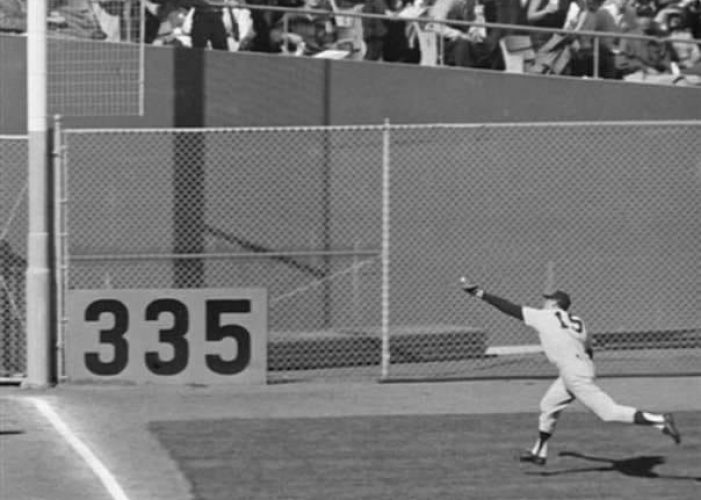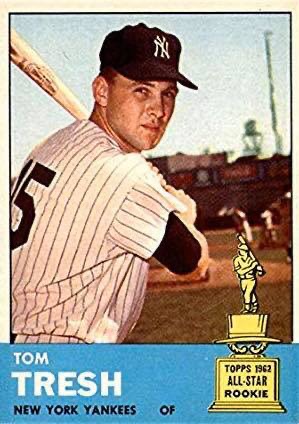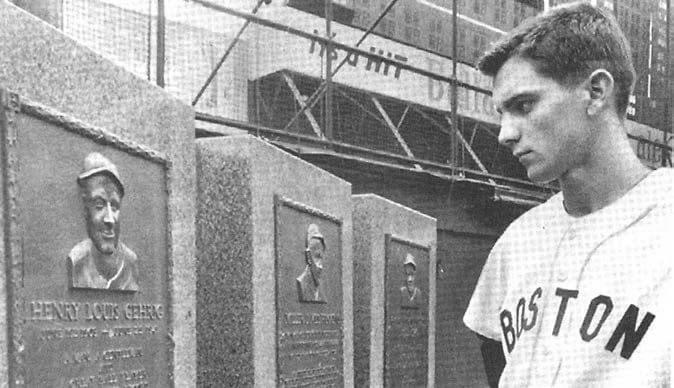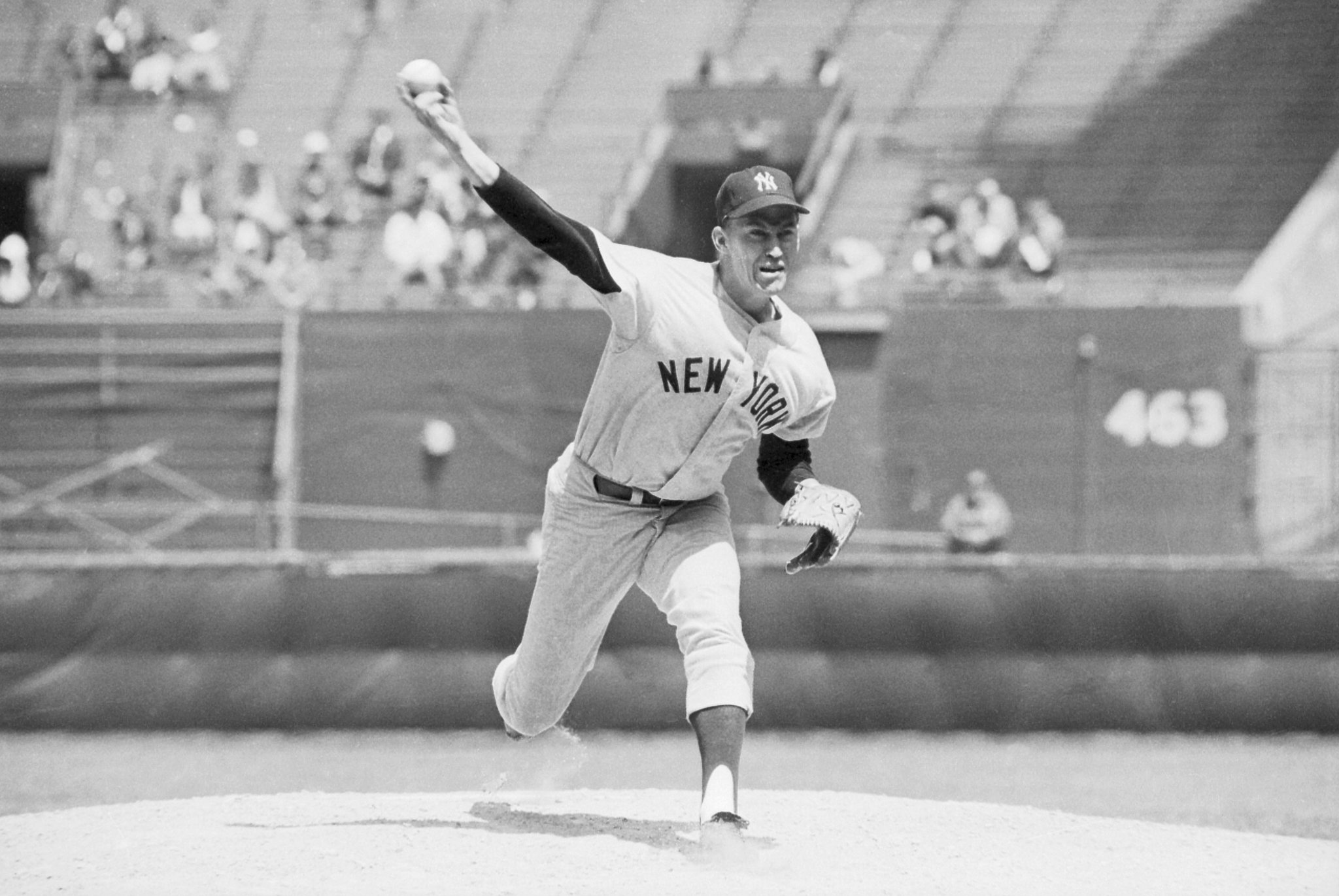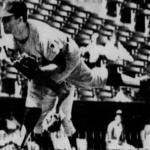Tom Tresh
Positions: Leftfielder, Shortstop and Third Baseman
Bats: Both • Throws: Right
6-1, 180lb (185cm, 81kg)
Born: September 20, 1938 in Detroit, MI us
Died: October 14, 2008 in Venice, FL
Buried: Cremated
High School: Allen Park HS (Allen Park, MI)
School: Central Michigan University (Mount Pleasant, MI)
Debut: September 3, 1961 (11,888th in major league history)
vs. DET 0 AB, 0 H, 0 HR, 0 RBI, 0 SB
Last Game: September 29, 1969
vs. BAL 4 AB, 1 H, 0 HR, 0 RBI, 0 SB
Rookie Status: Exceeded rookie limits during 1962 season
Full Name: Thomas Michael Tresh
View Player Info from the B-R Bullpen
View Player Bio from the
SABR BioProject
Relatives: Son of Mike Tresh
Nine Players Who Debuted in 1961
Carl Yastrzemski
Lou Brock
Boog Powell
Jim Fregosi
Sam McDowell
Dean Chance
Al Downing
Bill Freehan
Eddie Brinkman
All-Time Teammate Team
Coming Soon
Notable Events and Chronology
Biography
Once considered to be a superstar in-the-making, Tom Tresh appeared poised to follow in the footsteps of his hero, Mickey Mantle, after the versatile infielder/outfielder captured American League Rookie of the Year honors in 1962. Blessed with good power and speed, the switch-hitting Tresh earned All-Star honors in each of his first two seasons, once as a shortstop and once as a leftfielder. A key contributor to one world championship team and three consecutive pennant winners during the early stages of his career, Tresh surpassed 25 homers and 90 runs scored in three of his first five seasons. Yet, Tresh eventually failed to live up to the high expectations the Yankees set for him after he flourished his first few years, leaving the game at the conclusion of the 1969 campaign, at only 31 years of age, after seeing his performance decline considerably his last few seasons.
Born in Detroit, Michigan on September 20, 1938, Thomas Michael Tresh grew up in nearby Allen Park, where he attended high school before enrolling at Central Michigan University. The son of former major league catcher Mike Tresh, who played for the Chicago White Sox from 1938 to 1948, young Tom received a great deal of exposure to the professional game as a child. He later recalled, “I grew up watching my dad play and being around major leaguers, so, in my mind, there wasn’t any reason I couldn’t make it and do the same. It was a tremendous advantage for me from a mental aspect.”
Tresh also discussed the negative aspect of having a major league player for a father when he revealed, “Sometimes, though, it also put more pressure on me because people expected me to play better than most. There are pros and cons with having a dad in the pros, but the advantages certainly outweigh the disadvantages.”
Tresh signed with the Yankees as an amateur free agent in 1958 after starring at Central Michigan for two years. He spent most of the next three years working his way up the Yankee farm system, earning a promotion to the big club late in 1961 by batting .315 at Richmond, New York’s top minor league team. Nearing the end of a magical season, the Yankees had many great stars on their 1961 roster, including Mickey Mantle, Roger Maris, Whitey Ford, Yogi Berra, and Elston Howard. Tresh later discussed the emotions that stirred inside him the first time he stepped into the team’s clubhouse: “When you’re a 23-year-old kid and your dream has always been to play professional baseball, it’s kind of hard to believe. When you look around and you see all of these great players, it’s hard to fathom that you’re in the middle of all that and that you’re taking a role in that situation.”
Tresh appeared in only nine games for New York over the season’s final month, compiling a .250 batting average by hitting safely in two of his eight official trips to the plate. However, he assumed the role of starting shortstop for the team the following year, replacing Tony Kubek at the position for all but the final 45 games of the season while the latter fulfilled his military obligations. The versatile Tresh moved to left field after Kubek returned to the Yankees in mid-August. Playing a total of 111 games at shortstop and another 43 in the outfield, Tresh had an outstanding rookie campaign. In addition to doing a solid defensive job at both positions, he hit 20 home runs, knocked in a career-high 93 runs, scored 94 others, batted a career-best .286, and collected 178 hits and 26 doubles, en route to earning American League Rookie of the Year honors, a spot on The Sporting News All-Star Team, and a 12th-place finish in the A.L. MVP voting. Tresh punctuated his fine season by batting .321 during New York’s seven-game World Series triumph over the San Francisco Giants. He helped win Game Five of the Fall Classic for the Yankees by breaking up a 2-2 tie with a three-run home run in the bottom of the eighth inning off 24-game winner Jack Sanford. The blast enabled the Yankees to eventually win the contest by a score of 5-3, thereby giving them a 3-2 lead in the Series.
With Kubek available to the Yankees again in 1963, Tresh became the team’s full-time leftfielder, following up his Rookie of the Year performance with another productive campaign. In addition to hitting 25 home runs, driving in 71 runs, and batting .269, he led New York with 91 runs scored and 28 doubles. Tresh earned his second selection to the All-Star Team in as many seasons, while also finishing 11th in the league MVP balloting. Possessing good power from both sides of the plate, Tresh became just the eighth player in major league history to homer both right-handed and left-handed in the same game on September 1, joining teammate Mickey Mantle as one of only four American League players to accomplish the feat.
Tresh suffered through a subpar 1964 campaign, hitting only 16 home runs, scoring just 75 runs, batting only .246, and striking out a career-high 110 times. However, he rebounded in 1965 to have arguably his finest all-around year. With the Yankees failing to capture the American League pennant for the first time in six years, Tresh was one of the few bright spots on the team, leading his mates in virtually every offensive category. Tresh’s team-leading 26 home runs, 94 runs scored, .279 batting average, 168 hits, 29 doubles, and 287 total bases all placed him among the league leaders, and he also topped New York with 74 runs batted in and six triples. The outfielder had the greatest day of his career on June 6 when he hit four home runs in a doubleheader, including three in the nightcap. In that second game, he hit home runs from both sides of the plate for the third and final time in his career. With injuries greatly limiting Mickey Mantle’s availability to the team over the course of the season, Tresh saw extensive playing time in center field, earning the only Gold Glove Award of his career for his stellar play in the outfield. One of the American League’s elite players in 1965, Tresh placed ninth in the MVP voting, even though the Yankees finished sixth in the standings, a full 25 games out of first place.
Although Tresh batted just .233 in 1966, he had another productive year, hitting a career-high 27 home runs and scoring 76 runs for the last-place Yankees, while drawing a career-high 86 bases on balls. Tresh’s 86 walks enabled him to compile a fairly respectable .341 on-base percentage. Nevertheless, the outfielder’s diminished overall performance concerned some members of the Yankee front office, although there were those who attributed it to the passing of his father during the season. Still others believed that a two-month experiment during which Tresh played third base served as the primary cause for the decrease in his offensive production.
As it turned out, the 1966 campaign marked just the beginning of a downward spiral in Tresh’s career that ended his playing days just three years later. Hopeful of returning to top form in 1967, Tresh suffered a serious injury in spring training that brought to an end his days as an effective offensive player. Stopping quicky and pivoting to unleash a throw to the infield during an exhibition game, Tresh caught his right knee in the grass along the left field foul line. Tresh later recalled, “It felt like the bottom part of the leg had separated from the top part.” Tresh suffered cartilage damage to the knee, which was never the same again.
Tresh’s knee injury caused him to miss almost a month of the 1967 campaign, during which he posted the worst offensive numbers of his career, to that point. The New York leftfielder hit only 14 home runs, knocked in just 53 runs, scored only 45 others, and batted just .219. After being shifted back to shortstop early in 1968 to make room in left field for Roy White, Tresh continued to see his offensive numbers plummet. Despite appearing in all but 10 of New York’s contests, he hit only 11 homers and batted just .195. After Tresh compiled a batting average of only .182 in his first 143 at-bats in 1969, the Yankees decided to part ways with the former A.L. Rookie of the Year, dealing him to Detroit for spare outfielder Ron Woods on June 14. Tresh finished his career with the Tigers that year, batting just .224 in his final 331 at-bats.
While Tresh’s performance during the regular season tended to be somewhat erratic in New York, he produced consistently for the Yankees in postseason play. In three World Series with New York, he hit four home runs, drove in 13 runs, and batted .277 in 65 at-bats. In addition to winning Game Five of the 1962 Series with a three-run home run, he homered off Sandy Koufax and Bob Gibson in the 1963 and 1964 Fall Classics, respectively.
Nevertheless, both the Yankees and Tresh had to be somewhat disappointed in the way his career turned out. He seemed destined for bigger and better things, and for a much longer and far more productive career.
Roy White, who replaced Tresh in left field for the Yankees, cited two factors as the primary reasons for his predecessor’s decline. White suggested, “I think the injuries were part of it. Then, I think Mickey (Mantle) getting older, and Roger (Maris) and all those guys leaving the ball club made him kind of a marked man. He really didn’t have anybody to hit behind him, or protect him, so the pitchers could throw him something off-speed on a 3-2 count. He really didn’t get good pitches to hit. I think the injuries hurt him more than anything else, though. He really had bad knees.”
Yet Tresh considered himself a lucky man in many ways, expressing great pride in the fact that he had the opportunity to play on the same team as his childhood hero, Mickey Mantle.
“Mantle was my idol as a kid,” said Tresh. “He was the greatest player to ever play the game, in my opinion. I named my only son Mickey, so that should be a testament to my admiration for the man.”
Tresh also never felt cheated in that he left the game before the days of free agency, stating, “Sure, I might make millions today, but you really can’t have any regrets when you played for one of the greatest teams in history. I’ll always cherish the experience.”
Following his playing career, Tresh returned to his alma mater, Central Michigan University, where he worked as an assistant placement director for many years. He helped to invent the Slide Rite, a training tool to teach sliding and diving skills for baseball, softball, football, and soccer. Tresh passed away of a heart attack at his Venice, Florida home on October 15, 2008, less than one month after celebrating his 70th birthday.
@ET-DC@eyJkeW5hbWljIjp0cnVlLCJjb250ZW50IjoicG9zdF90YWdzIiwic2V0dGluZ3MiOnsiYmVmb3JlIjoiTGVhcm4gTW9yZSBhYm91dCB0aGUgdGVhbXMsIHBsYXllcnMsIGJhbGwgcGFya3MgYW5kIGV2ZW50cyB0aGF0IGhhcHBlbmVkIG9uIHRoaXMgZGF0ZSBpbiBoaXN0b3J5IC0gLSAtIC0gLSAtIC0gIiwiYWZ0ZXIiOiIiLCJsaW5rX3RvX3Rlcm1fcGFnZSI6Im9uIiwic2VwYXJhdG9yIjoiIHwgIiwiY2F0ZWdvcnlfdHlwZSI6InBvc3RfdGFnIn19@
Factoids, Quotes, Milestones and Odd Facts
Coming soon
Other Resources & Links
Coming Soon
If you would like to add a link or add information for player pages, please contact us here.

